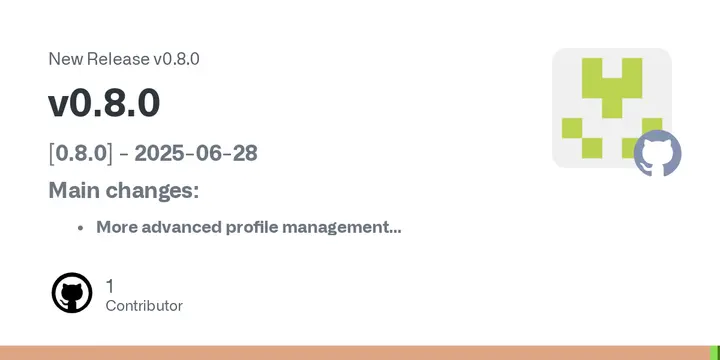Key Features and Enhancements:
1. Advanced Profile Management: Users can now define multiple conditions for profile activation. Profiles can be exported and imported as JSON files, making it easier to manage GPU settings across different systems.
2. Process Monitor: A new window allows users to view processes utilizing the GPU, displaying engine load and VRAM usage stats. This feature supports all major GPU vendors, utilizing `/proc fdinfo` for AMD/Intel and NVML for Nvidia.
3. Expanded Nvidia Metrics: Users can now access additional metrics, including GPU voltage, hotspot temperature, and VRAM temperature specifically for GDDR6.
4. Power Profiles Daemon Integration: The tool now detects the presence of the power-profiles-daemon and automatically adjusts settings to avoid conflicts, enhancing compatibility and functionality.
5. Flatpak Service Improvements: Updates to the Flatpak version ensure consistent performance across various system configurations, thanks to the integration of flatbox. Users will need to re-setup the service following the update.
6. Other Important Notes:
- Kernel version 6.14 or later is required for overclocking RDNA4 GPUs, as previous kernel versions had issues.
- A new workaround has been implemented to accurately report thermal throttling for RDNA3 GPUs.
- Users can now select from different Vulkan drivers if multiple options are available.
Additional Changes:
- The release also includes a variety of bug fixes and miscellaneous improvements, such as better handling of process events and updates to documentation and dependencies.Support:
Users who find value in LACT are encouraged to support its development through platforms like Liberapay or Ko-fi.Conclusion:
With version 0.8.0, LACT continues to evolve as a robust tool for GPU configuration and monitoring, providing users with more control and better insights into their systems. As the software landscape continues to change, updates like this ensure that LACT remains a valuable resource for users managing their GPU performance and settings effectivelyLACT 0.8.0 released
LACT Linux GPU Configuration and Monitoring Tool version 0.8.0 has been released, introducing enhanced profile management, a process monitor, and additional Nvidia metrics. The tool now facilitates the export and import of profiles to JSON files and is compatible with all three GPU vendors. The update incorporates additional metrics for GPU voltage, GPU hotspot temperature, and VRAM temperature. The integration of the power profiles daemon is now active, allowing for the detection of the power-profiles-daemon on the system and the automatic disabling of any conflicting functionalities.
Enhancements to the Flatpak service have been implemented, enabling LACT to function more reliably across various system configurations. Important points to note include the need for kernel 6.14 or later to overclock RDNA4 GPUs, a new fix for RDNA3 that reliably shows thermal throttling, and the ability to select from different Vulkan drivers.


